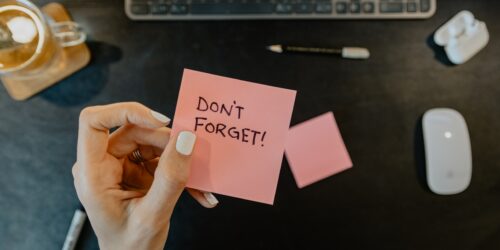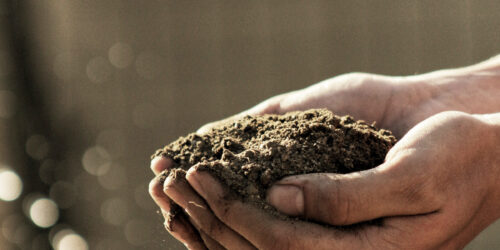Review and Reflection and how to Assess Them: Part 1
What is reflection?
Consider the following scenarios.
- A team of engineers spend weeks on a proposal for the company’s best client. They hear back in two days that the client is not convinced and has decided not to spend the money on the project. Based on the feedback, the manager requests that the team review the submission and propose an alternative. The team compares the proposal with the feedback, identifies the gaps in expectations, and determines their next steps. This team has just engaged in a review – which is a type of reflective process.
- A meeting with a new business client is awkward. You’re not sure what went wrong, but the client does not respond to your follow-up email. What is your next move? How will you identify possible issues and potential solutions in order to move forward? Your analytical process in this case is also a reflective process.
Responsible practitioners in most professions are expected to know not only what to do and how to do it, but why to do it. Effective professionals in careers as diverse as health care, social work, design, and engineering will need to know how to analyse situations as well as their own decision-making processes in order to perform effectively and continue to grow in their practice. Given the value of the skill of reflection, known as review in some disciplines, many programs aim to imbed reflection as part of the learning process.
Reflection is a learned skill with both cognitive and affective dimensions. To support you in identifying the what, the how, and the why of teaching students to reflect, Part 1 of this teaching tip will define reflection as an educational concept within an historical context to help you situate your assignments and classroom practices within a wider understanding of reflection as a skill.
A Timeline of Reflective Practice
Defining reflection
According to renowned philosopher of education John Dewey, reflection happens in response to a difficult or challenging experience. Its purpose is to use careful thought to progress from routine action to reflective action. Since everyone has drawn on Dewey since, here is his definition of reflection: “active, persistent and careful consideration of any belief or supposed form of knowledge in the light of the grounds that support it and the further conclusion to which it tends” (Dewey, 1933, as cited in Cranton, 2016).
Reflection embedded into a learning cycle
David Kolb’s experiential learning framework (1984), described below, draws on Dewey and embeds reflection into a learning framework. Many have found the Kolb model helpful in setting up meaningful learning opportunities and assessments, although it has since been contested as an oversimplified framework (e.g. Bergsteiner et al., 2010).
- Concrete experience – something happens. We have an experience.
- Reflective observation – we observe what happened. What do we notice about the actions involved in the experience and/or the results of the experience?
- Abstract conceptualization – we begin to draw conclusions and make generalizations based on our observations.
- Active experimentation – we find ways to test our conclusions. This experimentation should lead us into a new concrete experience.
Reflective practice
Donald Schön’s work is some of the most cited because the terminology he created has given educators the language to discuss reflection in a professional setting. Even the term “reflective practice” itself was coined by Schön (1983). Here are some useful terms related to reflective teaching and learning practices.
- Knowing-in-action – we act on tacit knowledge about how to do our job. Our tacit knowledge may be so ingrained that we can’t even express it accurately. It is thus not available to be passed on to the next generation, and it is not easily questioned or improved upon unless we learn to think reflectively about our practice.
- The reflective process enables us to bring together the tacit knowledge imbedded in our practice with the technical and professional knowledge which we use to inform our practice. Later scholars have named this professional knowing (Schön), personal theory (Beverley and Worsley), or practical wisdom (Thompson, Humphrey).
- Reflection-in-action – this refers to reflecting on our actions during an event and applying the fruits of our reflection to action in real time.
- Reflection-on-action – this refers to reflecting on our actions after an event is over. We analyze what happened in the light of our professional knowledge to learn and to plan for future action.
- Reflection-for-action John Cowan (2006) and Thompson and Thompson (2008) built on Schön’s work, adding the possibility of reflection before an event. Before one engages in a meeting, an interview, or any kind of professional action, one can reflect proactively, anticipating problems and drawing on one’s own knowledge to plan for the most effective action.
Including feelings as a part of reflection
Until the 1980’s, the concept of reflection remained mainly in the cognitive realm. Boud, Keogh, and Walker (1985) corrected this imbalance by creating a framework consisting of the following:
- return to the experience – remember the details, including affective aspects
- attend to feelings – notice and analyze both positive and negative responses
- re-evaluate the experience through processes of association, integration, validation, appropriation.
The examination of feelings (both positive and negative) as they relate to our thoughts and actions is essential in order to open ourselves to new ways of understanding rather than becoming entrenched in old attitudes. Boud and Walker (1985) suggest that we integrate our social and cultural context in reflecting on our understanding of events.
Three levels of reflection
Based on the ideas of Jurgen Habermas and Max Van Manen, Jack Mezirow’s three levels of reflection (1991) identify that reflection has increasingly complex layers depending on the purpose of the reflection.
- Content reflection: “is the examination on the content or description of the problem (Cranton, 2016, p. 26).” By itself, content reflection leads to a technical or instrumental problem-solving focus. For example…
- in a trades class, students learning a new skill might read the instructions and check what equipment is needed.
- in a nursing class, students might read the instructions, listen to a lecture, and then talk through the upcoming procedure to prepare for their lab practice.
- Process reflection: “involves checking on the problem-solving strategies being used” (Cranton, 2016, p. 26). On its own, process reflection lends itself well to the acquisition of practical or communicative knowledge. For example…
- in the trades class, the students can examine the results of their first try and compare the how they used the equipment with the instructions and with a video pre-recorded by the teacher.
- in the nursing class, students having difficulty carrying out a new procedure can reflect on the process they followed, read further about the procedure, and plan to try again.
- Premise reflection (critical reflection): “takes place when the problem itself is questioned” (Cranton, 2016, p. 26). This kind of critical reflection can lead to a questioning of presuppositions and the possibility of a new understanding of ourselves and our relationship to the world. This potentially empowering critical reflection is a key component in transformative learning. For example…
- the students in the trades class identify a solution to a production problem, and they realize their own capability. They think about how they might convince a supervisor or a customer to listen to their ideas in a work-place setting.
- in the nursing class, students compare their lab experience with how they will work with real patients in a clinical setting. They think about how to focus on the relational aspects of patient care and how this might impact the use of their technical skills.
- a group working on a capstone project ask themselves whether the project they have chosen is worthy of the time they will spend. Should they focus on a project that better reflects their values and desires as new professionals in the field?
The ethical aspect of reflection
Ginnie Bolton (2018) urges the examining of our ethics and beliefs as part of our conscious reflection process. This encourages practitioners to move from reflection to critical reflection – the questioning of the structures and premises behind the events upon which we reflect. This level of reflection will impel us forward to improvement which is moral and just as well as effective and efficient.
Reflection is a developmental skill
According to Jennifer Moon (2004), reflection is a skill that improves with routine practice. Reflection as a skill moves from the more concrete to “engag[ing] critically with complexity and uncertainty” (Bruce, 2013, p. 46). In other words, students cannot be expected to already know how to reflect effectively. They will need graduated practice, modelling, and feedback.
Frameworks for reflection
Because reflection is such a complex skill, many frameworks have been created over the years to support educators and practitioners in the process. One example which is commonly used in health care to ensure adequate patient charting is SOAP notes.
- Subjective: what the client notices/shares
- Objective: what the practitioner notices based on examination
- Assessment: a brief summary of the practitioner’s conclusions
- Plan: the treatment plan and recommendations for the client
Because SOAP notes provide such a useful framework for purposeful reflection, the framework has recently been adapted by educators such Angela Mills and colleagues for taking notes on student progress in order to identify next steps in their education (Mills et al., 2020).
Want to know more about how to encourage reflection in the classroom and in assessments? Read Part 2 for more examples of reflective frameworks and suggestions to help students learn to reflect.
References
Bergsteiner, H., Avery, G., & Neumann, R. (2010). Kolb’s experiential learning model: critique from a modelling perspective. Studies in Continuing Education, 32(1), 29–46. https://doi-org.conestoga.idm.oclc.org/10.
Bolton, G. E. J., & Delderfield, R. (2018). Reflective practice: Writing and professional development (5th ed.). SAGE Publications Ltd.
Bruce, L. (2013). Reflective practice for social workers: A handbook for developing professional confidence. Open University Press.
Cowan, J. (2006). On becoming an innovative university teacher: Reflection in action (2nd ed.). Open University Press.
Cranton, P. (2016). Understanding and promoting transformative learning: A guide to theory and practice (3rd ed.). Sterling, VA: Stylus.
Mills, A. M., Weaver, J. C., Bertelsen, C. D., & Dziak, E. T. (2020). Take pause in quiet moments: Engaging in reflection to guide instruction. Reading Teacher, 74(1), 71–78. https://doi-org.conestoga.idm.oclc.org/10.1002/trtr.1915



